Process¶
The process of creating the digital library is a complex but creative process. There are stages that will only be done on the computer. Of course, the creation of samples will be a real one. The work stages are presented in the diagram below.

Inspiration¶
As a designer, in the final project I want to emphasize the creation of a digital library with ornamental techniques characteristic of my country. Using the digital library will allow you to: reduction of textile waste, reduced time in creating new collections, environmental protection and preservation and integration of the country's cultural heritage in fashion.
Also, my project will collaborate with the local project "Education for revitalizing the national cultural heritage through the traditional technologies of processing used in the area of the Republic of Moldova, in the context of multiculturalism, diversity and European integration". The specific objectives of this project are directed to the identification, revitalization, valorization, consolidation and promotion of the values of the national heritage expressed through traditional dishes, wines and artisanal alcoholic beverages, handmade products, textiles, fabrics, leather and accessories from the Bessarabian area.
Moldovan national costume¶
The national Moldovan costume is a vivid example of the unique creativity of folk craftsmen, an example of ancient customs, evidence of the deep interaction of the Moldovan ethnos with neighboring peoples.
Not so long ago, every craftswoman was obliged to independently make an outfit for herself. Moreover, copying intricacies and patterns was not allowed. By the nature of the pattern, the color scheme, the peculiarities of the cover, one could judge the social status of the girl, the inclinations of her character. A prerequisite was the harmony of the costume with the general appearance - the color of the eyes, hair, headdress.
Natural fabrics traditionally served as material for the manufacture of dense fabrics: wool, flax, hemp, cotton. The material of the suit reflected the well-being of the family. Moldovans of modest means used hemp fabric, while the more affluent used linen or cotton, which was significantly more delicate than hemp. Moreover, the canvases themselves were often made at home. Silk was also used to make towels that served women to cover their heads.
Specific to the folk costume is the chromatic element, characterized by sobriety and balance in the use of colors, in their harmonious combination, resulting in the achievement of tasteful coloristic effects and artistic refinement. The basic colors are: black, red, dark brown, blue, green and purple. The colors of the folk costume are characterized by harmony and freshness, the colors being combined in an aesthetic way. The colors obtained by vegetable dyeing were warm, non-contrasting.
The decorations of the Moldovan costume were directly related to the area in which this people lived. The fertility of the soil, the mild climate, rich harvests - everything was reflected in the embroidery and patterns on the fabric. The pattern in the form of leaves, flowers, bunches of grapes combined with a geometric embroidery pattern created a unique flavor of the Moldovan national costume.

The national costume for women and men consists of various elements. The most characteristic elements are presented below.

Women's festive costume:

Men's festive costume:

Moodboard¶
In order to better visualize my idea, I created a moodboard in which some clothing diversification techniques can be visualized.

Research¶
The Romanian folk costume has its roots in the clothing of the Dacian, Geta and Thracian ancestors and is similar to that of other peoples of the Balkan Peninsula. The oldest iconographic evidence of the way people in the Romanian area dressed was discovered in the Craiova area, in the form of ceramic figurines dating from the Neolithic (10,000-4,500 years BC), from the Stone Age. On these statuettes, drawings of the cut of the basic pieces can be distinguished: the shirt, the coat, the opreg with tassels.
In the evolution of the Romanian folk costume, three stages can be distinguished:
The first stage - differences appeared between the people who lived in the Romanian territories and the neighbors. Also, the first differences in motifs and styles appear between areas of the country, but also different colors or patterns according to age or social status;
The second stage – occurs with economic development and the industrial revolution. Materials were beginning to be created industrially and not at home. The folk port was still woven at home, but the materials were more readily available. In the same period, the first pieces with urban influence appeared, and an example of this is the replacement of the white headscarf with the kerchief;
The third stage – the folk costume began to be replaced by common clothes, called "city" and to be worn in the village only occasionally (at church, wedding, baptism, etc.). Today, the popular port is still found especially to promote the tradition within regional events or celebrations specific to certain areas.
Research trips¶
An important stage of this process is establishing the type of ornament that will be introduced in the digital library.
In the past, during the process of costume decoration it was prohibited to copy patterns and deviate from the national traditions. Each girl had to create her unique festive costume with a glance to local traditions, demonstrating her aesthetic taste. The attire accorded with the character, age and social status of its owner, it harmonized with the appearance of the owner, the color of his/her eyes and hair. The most important product of our polar port is the blouse called IE. In order to identify the various characteristic ornaments, trips were made to various museums in the country. There I could admire various clothing and textile products with different ornamentation techniques.
Models de Elena Florea-Burduja
National ornamentation techniques¶
The main element in the ornamentation of the Romanian costume consists in the way of decoration, both as placement and composition of the motifs, they being placed in certain spaces. In general, the ornamentation of the costumes is geometric, stylizing the forms of natural inspiration, such as: birds, flowers, animals. A special place is represented by the symbol of the cross decorated and stylized in many forms, but also of other religious symbols: the fish, the Byzantine cross, the ladder of life, the vine, the ear of wheat, the grape, the peacock, etc. The ornaments were created by peasant women who were inspired by the surrounding environment, from everyday life. Essential was the way in which the ornament was arranged on the canvas, thus providing a balance between the different ornamental fields, a good aesthetic taste.
For the ornamentation of the folk costume and home textiles, the following techniques are most often used: embroidery, crocheting, weaving and leather processing.

Creating a virtual prototype¶
Parallel to the stage of selecting the ornamentation techniques, 2D and 3D models will be elaborated, for the virtual presentation of the obtained results. A collection of five clothing products was created. It is only an artistic sketch that can be modified taking into account the techniques that will be applied. The collection presents simple shapes, because the main emphasis will be on ornamentation techniques.
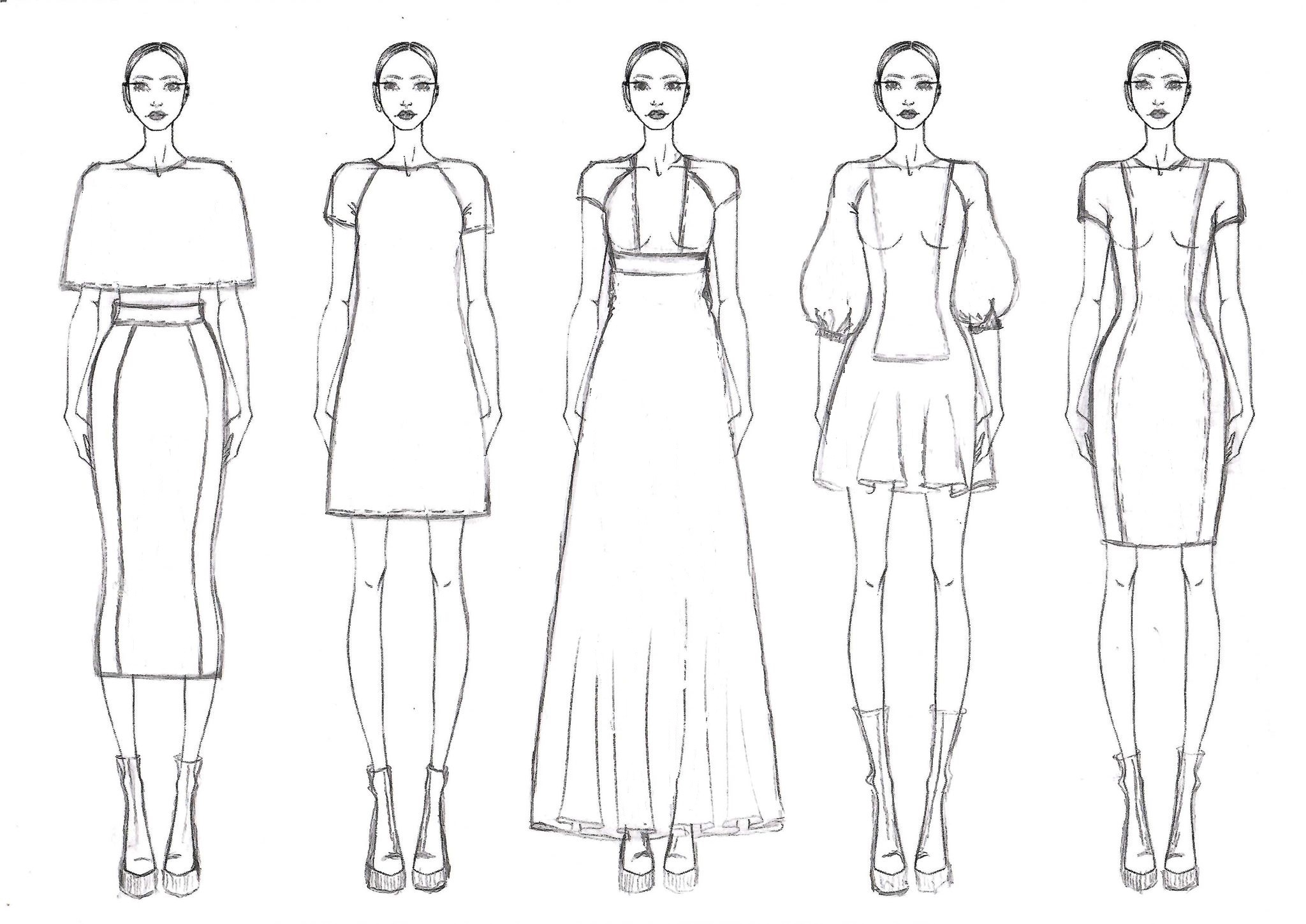 Artistic sketches were made for the entire collection. Adobe Illustrator software was used at this stage.
Artistic sketches were made for the entire collection. Adobe Illustrator software was used at this stage.
At the moment, the white color of the collection was selected. But this can be changed at any time. Only 3 models out of the 5 planned are presented here.
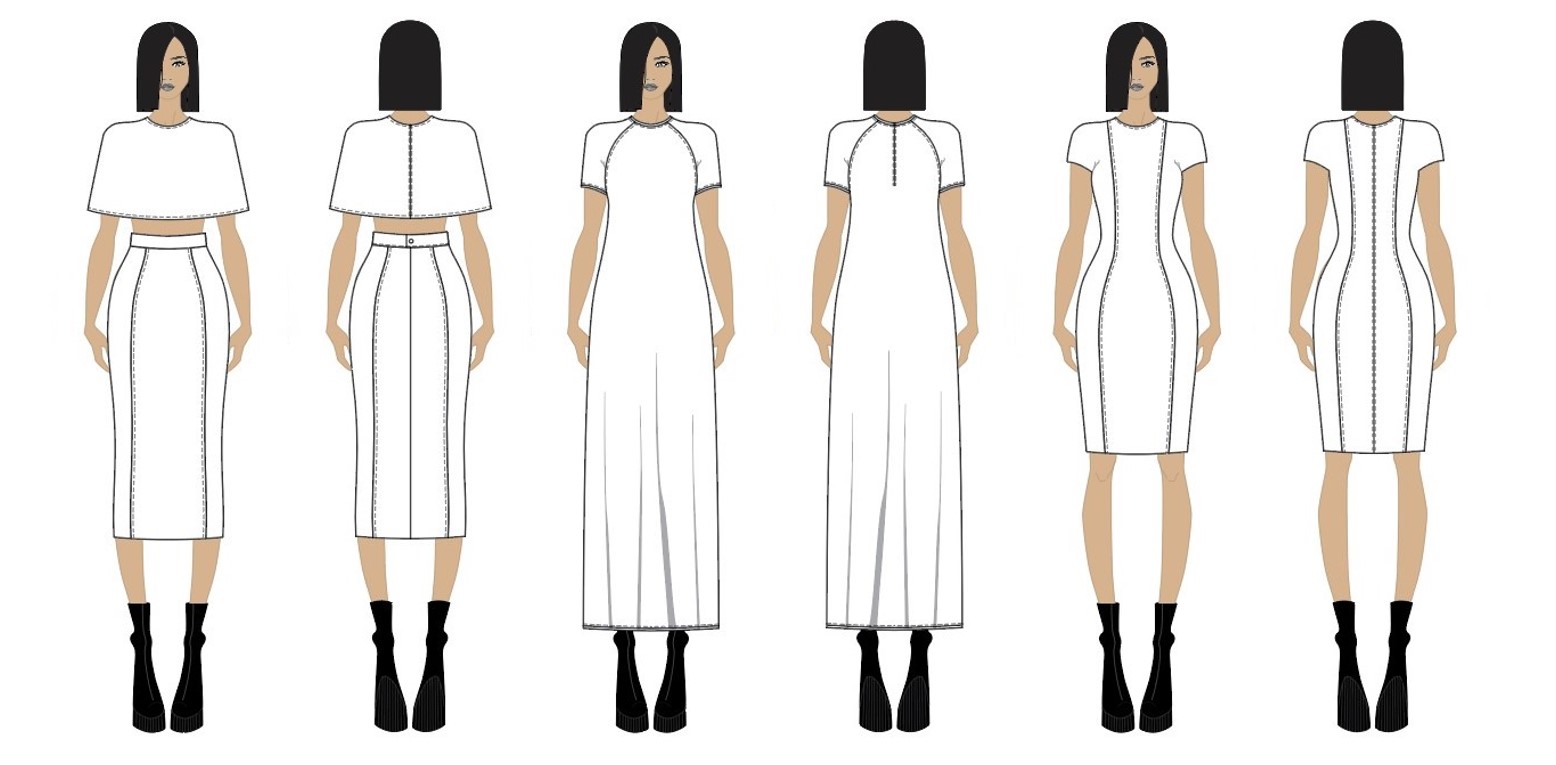 Several models were made in CLO3D
Several models were made in CLO3D
 For the experimental trials, the model placed in the center of the collection was used. The 2D pattern was developed for him.
For the experimental trials, the model placed in the center of the collection was used. The 2D pattern was developed for him.
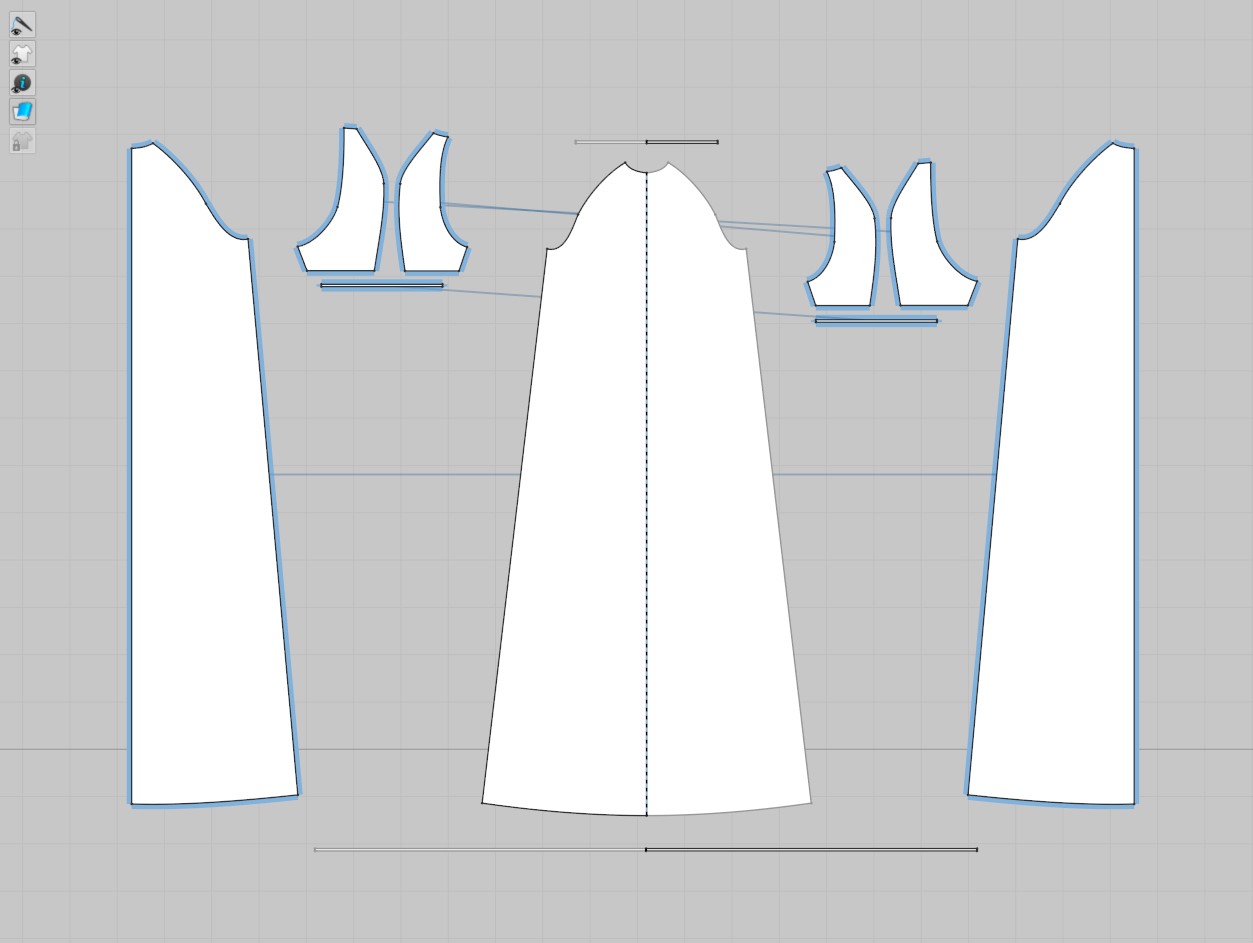 The virtual simulation of the product on the avatar was also carried out in the CLO3D software. Below you can view the product details on the avatar body.
The virtual simulation of the product on the avatar was also carried out in the CLO3D software. Below you can view the product details on the avatar body.
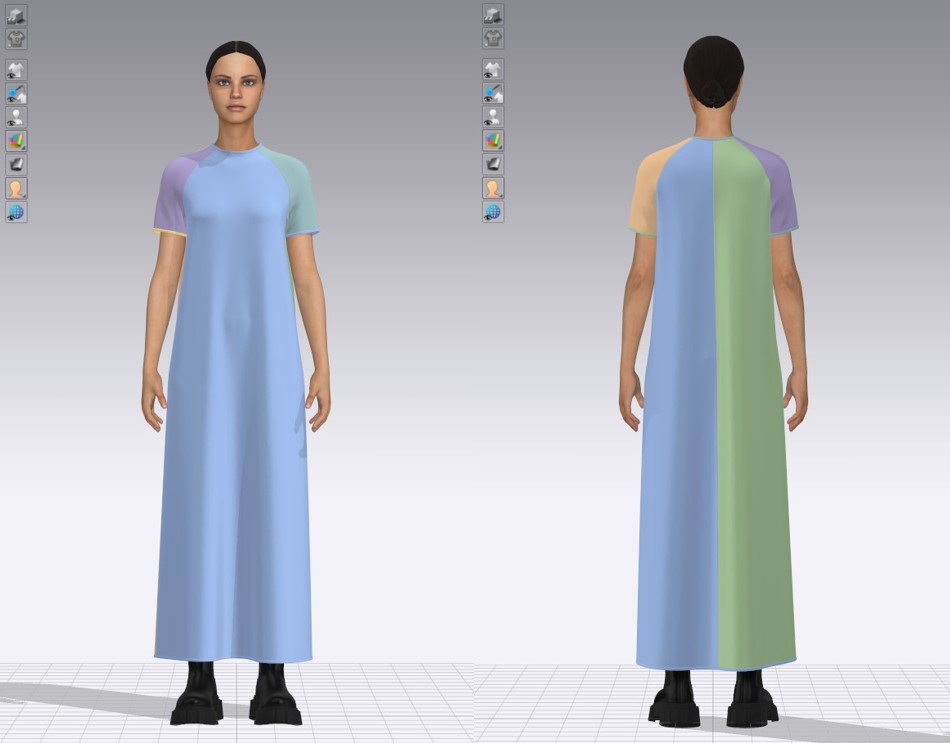 If necessary, the initial rendering of the model can be made and saved in jpg or png format.
If necessary, the initial rendering of the model can be made and saved in jpg or png format.

Two software were used to convert the ornaments into digital format: Pattern Maker for Cross Stitch and Cross Stitch Professional Platinum. Both softwares allow the creation of ornaments in cruciulite and both allow saving the ornaments in the necessary format to be used in 2D and 3D software. To see the difference between them, embroideries were created and placed on virtual clothing.
 We notice that the embroideries made in Cross Stitch Professional Platinum have a much better visualization (the second ornament). The following embroideries will be made in this program.
We notice that the embroideries made in Cross Stitch Professional Platinum have a much better visualization (the second ornament). The following embroideries will be made in this program.
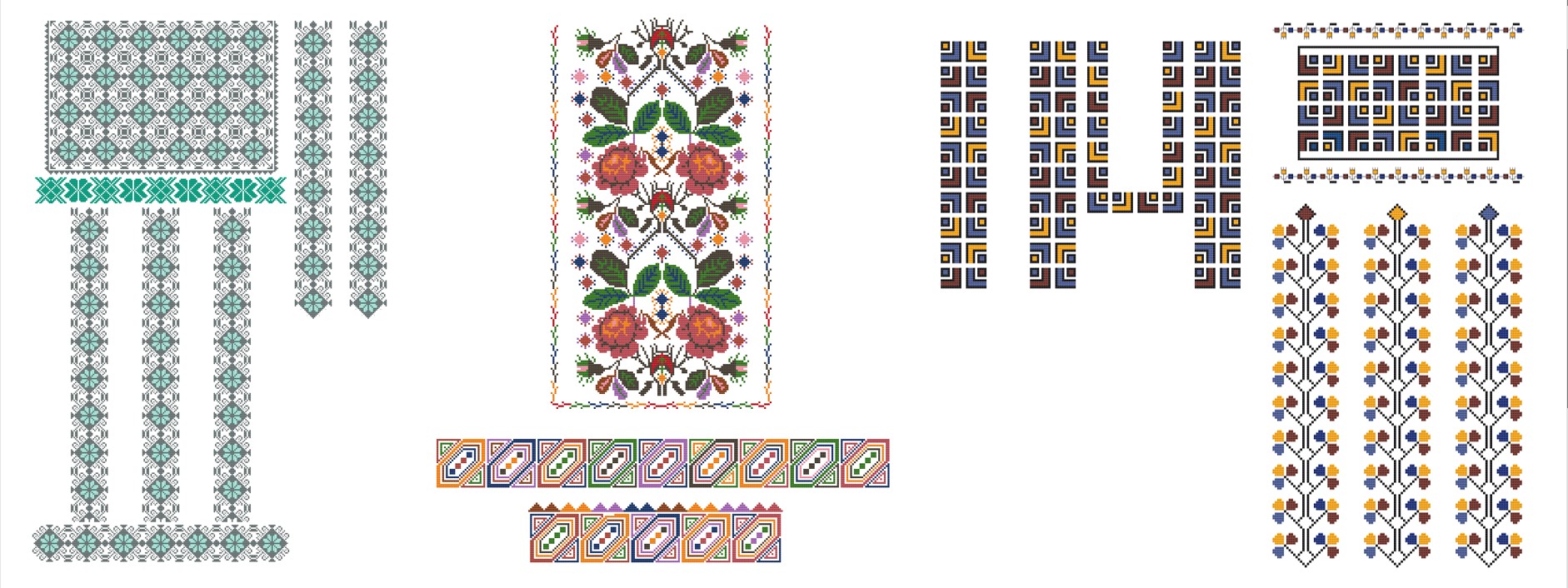 The digital ornaments were placed on the clothes in the CLO3D software
The digital ornaments were placed on the clothes in the CLO3D software
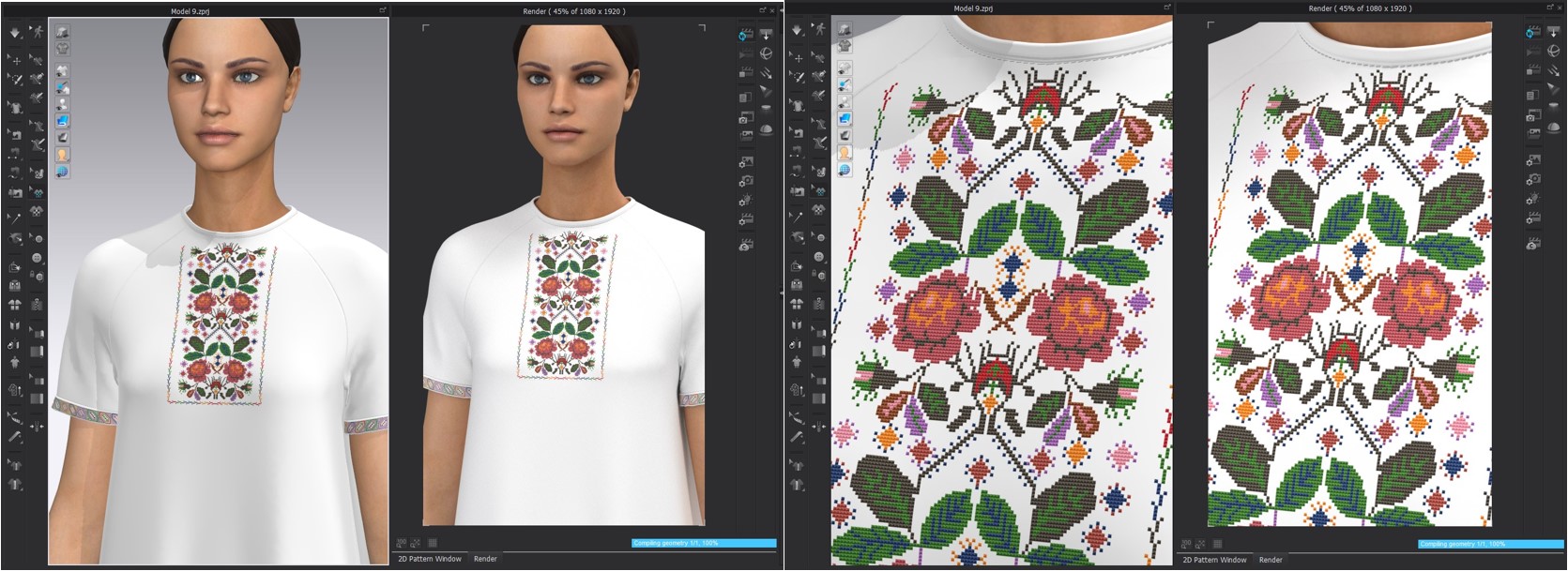
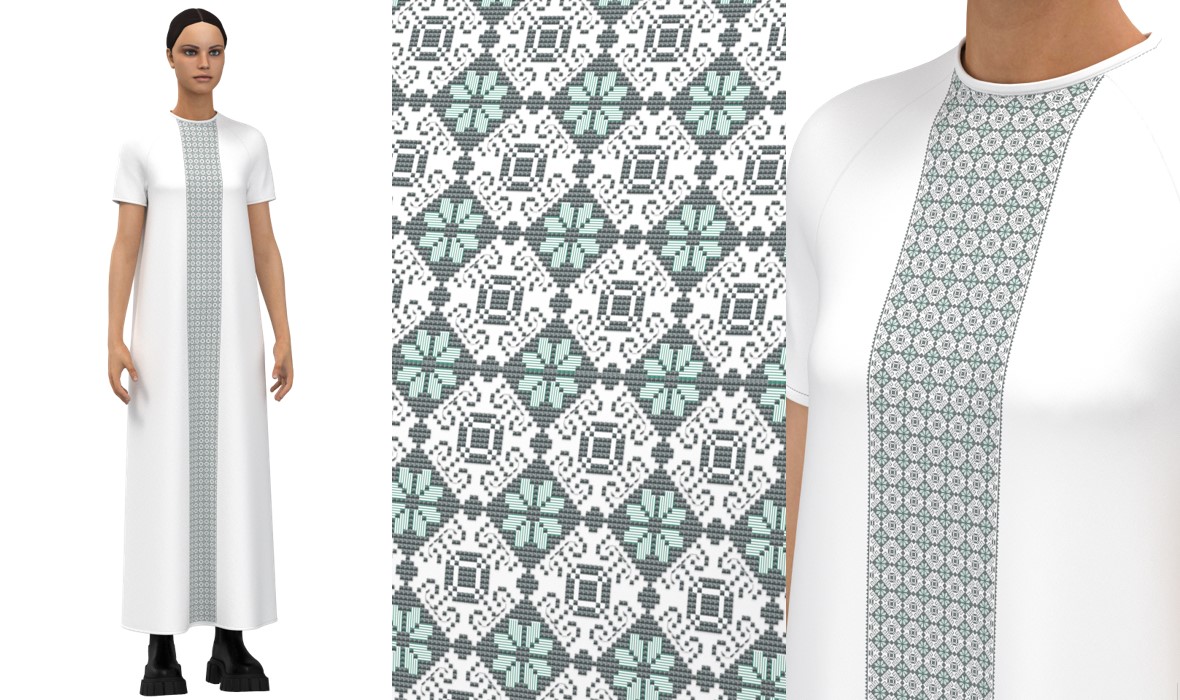
Mentoring notes¶
After the presentation of the project idea, the opinions of the mentors were as follows:

